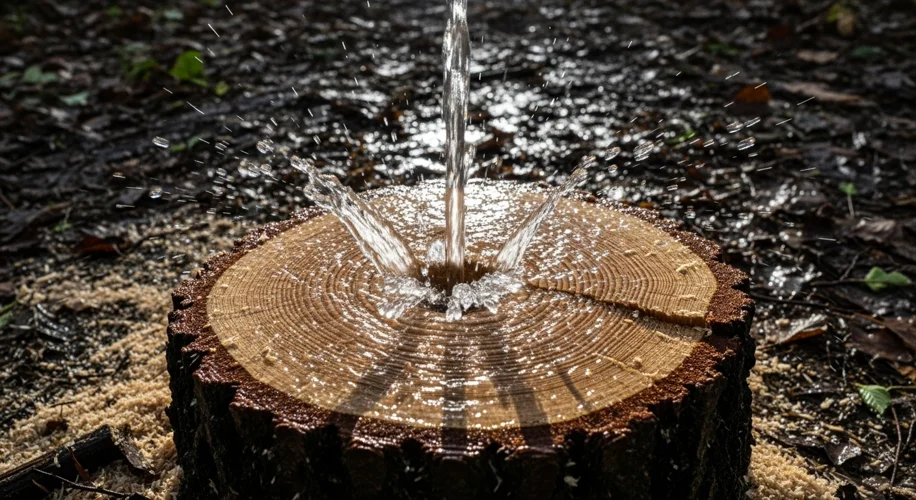Have you ever seen a video or a picture of a freshly cut tree gushing water? It might look surprising, even a bit dramatic. But as a climate scientist, I see it as a clear, vivid illustration of how our forests and water cycles are deeply connected.
It’s a simple phenomenon with complex roots, and it all comes down to how trees manage water. Trees are incredible water pumps. They draw water up from the soil through their roots and transport it all the way to their leaves. This process is called transpiration. Think of the trunk and branches as sophisticated plumbing systems. Inside the tree, there are tiny tubes called xylem, which act like straws, carrying water upwards. These tubes are under constant tension because of the water evaporating from the leaves.
When a tree is cut, this system is abruptly disrupted. The internal pressure changes, and the water that was being held within the tree’s trunk and branches is released. It’s not necessarily a sign that the tree is ‘sad’ or that something is wrong with the soil, but rather a visible demonstration of the immense amount of water a tree holds and actively moves.
This event is also a stark reminder of what happens to our environment when we remove trees, especially on a large scale. Forests play a critical role in retaining water. The canopy intercepts rainfall, slowing it down and allowing it to seep into the ground. The root systems help to bind the soil, preventing erosion and further aiding water infiltration. When forests are cleared – a process known as deforestation – this natural water regulation system is broken.
Without trees, rainwater runs off the surface more quickly. This can lead to increased soil erosion, where valuable topsoil is washed away. It also means less water is absorbed into the ground, which can impact groundwater levels and the availability of water for rivers and streams, especially during dry periods. Altered hydrological cycles are a direct consequence of deforestation. This means the natural pattern of water moving through the environment – from rain to rivers to oceans and back again – can be significantly changed.
The water gush from a cut tree is a small, immediate visual. But it symbolizes a larger, more pervasive impact: the loss of a vital component in Earth’s water management system. Our forests are more than just collections of trees; they are integral parts of the climate system, influencing rainfall patterns, water availability, and soil health.
So, the next time you see one of these ‘weeping’ trees, remember the science behind it. It’s a powerful, albeit wet, lesson in the importance of trees and the delicate balance of our natural world. Protecting and restoring our forests isn’t just about preserving biodiversity or combating climate change; it’s also about safeguarding the water resources we all depend on.
What can we do? Supporting organizations dedicated to reforestation and sustainable land management practices makes a tangible difference. Educating ourselves and others about the crucial role forests play in our water cycles is another powerful step.

